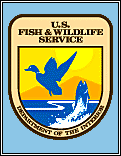Northern Prairie Wildlife Research Center

by
Alan B. Sargeant
Raymond J. Greenwood
Marsha Sovada
Terry L. Shaffer
U.S. Fish and Wildlife Service, Northern Prairie Wildlife Research Center, Jamestown, North Dakota 58401
Key words: Avian predators, duck production, history, inter- and intraspecific relations, mammalian predators, predator abundance, predator distribution, population monitoring, population trends, predator communities, prairie pothole region.
During 1983-88, the relative abundance of 18 species and species-groups of mammalian and avian predators affecting duck production in the prairie pothole region was determined in 33 widely scattered study areas ranging in size from 23-26 km2. Accounts of each studied species and species-group include habitat and history, population structure and reported densities, and information on distribution and abundance from the present study. Index values of undetected, scarce, uncommon, common, or numerous were used to rate abundance of nearly all species in each study area. Principal survey methods were livetrapping of striped skunks (Mephitis mephitis) and Franklin's ground squirrels (Spermophilus franklinii), systematic searches for carnivore tracks in quarter sections (0.65 km2), daily records of sightings of individual predator species, and systematic searches for occupied nests of tree-nesting avian predators. Abundances of predators in individual areas were studied 1-3 years.
The distribution and abundance of predator species throughout the prairie pothole region have undergone continual change since settlement of the region by Europeans in the late 1800's. Predator populations in areas we studied differed markedly from those of pristine times. The changes occurred from habitat alterations, human-inflicted mortality of predators, and interspecific relations among predator species. Indices from surveys of tracks revealed a decline in the abundance of red foxes (Vulpes vulpes) and an albeit less consistent decline in the abundance of raccoons (Procyon lotor) with an increase in the abundance of coyotes (Canis latrans). Records of locations of occupied nests revealed great horned owls (Bubo virginianus) and red-tailed hawks (Buteo jamaicensis) tended to nest < z=0.5 km apart, and American crows (Corvus brachyrhynchos) tended to avoid nesting < =0.5 km of nests of red-tailed hawks. Excluding large gulls, for which no measurements of abundance were obtained, the number of predator species averaged 12.2 (SD= 1.60) per study area; common or numerous predator species averaged 6.0 (SD = 1.54) per study area (minimal because the abundance of weasels [Mustela erminea; M. frenata] in all areas and of minks [Mustela vison] and raptors in some areas was not rated). Major changes in relative abundance of individual predator species studied >1 year were few. Predator species most restricted to the aspen parkland were the Franklin's ground squirrel, black-billed magpie (Pica pica), American crow (Corvus brachyrhynchos), and red-tailed hawk; species most restricted to the prairie were the badger (Taxidea taxus), Swainson's hawk (Buteo swainsoni), and ferruginous hawk (B. regalis). The coyote, black-billed magpie, and American crow were most numerous in Canada, whereas the red fox, raccoon, mink, ferruginous hawk, and great horned owl were most numerous in the United States. The number of common or numerous egg-eating predator species (excludes large gulls and weasels, which were not rated) averaged 4.6 (SD = 0.90) per study area. The average numbers of common or numerous egg-eating species per study area did not differ among provinces and states, but birds gradually replaced mammals from southeast to northwest across the region. Investigators are urged to assess composition of predator populations and relative abundance of predator species for evaluations of waterfowl recruitment.
This resource is based on the following source (Northern Prairie Publication 0861):
Sargeant, Alan B., Raymond J. Greenwood, Marsha A. Sovada, and Terry L. Shaffer.
1993. Distribution and abundance of predators that affect duck production -
Prairie Pothole Region. U.S. Fish and Wildlife Service, Resource
Publication 194. 96pp.
This resource should be cited as:
Sargeant, Alan B., Raymond J. Greenwood, Marsha A. Sovada, and Terry L. Shaffer.
1993. Distribution and abundance of predators that affect duck production -
Prairie Pothole Region. U.S. Fish and Wildlife Service, Resource
Publication 194. Jamestown, ND: Northern Prairie Wildlife Research Center Online.
http://www.npwrc.usgs.gov/resource/birds/predator/index.htm
(Version 16JUL97).


As the Nation's principal conservation agency, the Department of the Interior has responsibility for most of our nationally owned public lands and natural resources. This includes fostering the wisest use of our land and water resources, protecting our fish and wildlife, preserving the environmental and cultural values of our national parks and historical places, and providing for the enjoyment of life through outdoor recreation. The Department assesses our energy and mineral resources and works to assure that their development is in the best interests of all our people. The Department also has a major responsibility for American Indian reservation communities and for people who live in island territories under U.S. administration.
| EDITORIAL STAFF |
| Managing Editor Paul Opler |
| Assistant Managing Editor Paul A. Vohs |
| Wildlife Editor Elizabeth D. Rockwell |
| Fisheries Editor James R. Zuboy |
| Publications Management Thomas J. Cortese |
| Technical Editors Deborah K. Harris, Senior Editor John S. Ramsey |
| Visual Information Specialist Constance M. Lemos |
| Editorial Assistants Rhonda G. Brown Amy D. Trujillo |
Copies of this Publication may be obtained from the Publications Unit, U.S. Fish and Wildlife Service, 1849 C Street, N.W., Mail Stop 130, Webb Building, Washington, DC 20240, or may be purchased from the National Technical Information Service (NTIS), 5285 Port Royal Road, Springfield, VA 22161 (call toll free 1-800-553-6847).
Installation: Extract all files and open index.htm in a web browser.predator.zip (667K) -- Distribution and Abundance of Predators that Affect Duck Production - Prairie Pothole Region